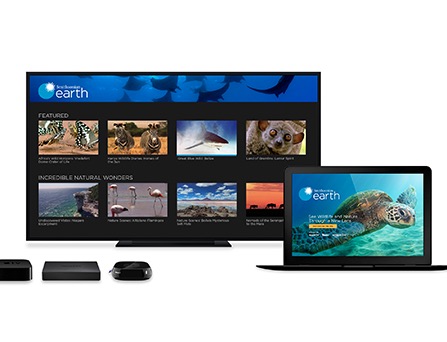Smithsonian Earth Looks to Get on the OTT Map

It’s a crowded OTT world out there, and standing out—and getting consumers to keep coming back—isn’t easy.
Joseph Giraldi, senior VP of digital media for Smithsonian Networks, thinks his team might have it figured out with Smithsonian Earth, the subscription video-on-demand service that launched in late 2015.
“Key value propositions with Smithsonian Earth are that it’s all exclusive content, [the content’s] only available on Smithsonian Earth, it’s available in 4K and HD and we’re one of the first media offerings [where the] content is shot in 4K,” Giraldi said.
It’s a unique combination in OTT. It’s all nature and wildlife all the time, with everything available on the $3.99-per-month service being exclusive to the platform, from the nature documentaries, to the short-form wildlife videos, to the narration-free nature scenes that act like TV wallpaper. And everything on Smithsonian Earth is shot and accessible in 4K.
“We’re targeting nature and wildlife enthusiasts—and with 4K, your more tech savvy, early adopters. We’re targeting the adventurer, explorer-oriented person, those who like to be taken to exotic places around the world, whether it’s Africa or Asia or South America,” Giraldi said. “And we’re also targeting those who want family-friendly fun content. We’re very much focusing on both male and female demographics, a bit younger than your nonfiction documentary viewers, early adopters in digital platforms.”
GLOBAL PLAN
The challenges involved in making Smithsonian Earth (which is available on Apple TV, Amazon Fire TV and Roku devices) relevant can’t be understated. Unlike the HBOs and Showtimes of the OTT world, Smithsonian Earth can’t point to previous seasons of content to lure newcomers in. And with 4K, capturing content in Ultra Hi-Def (UHD) may be the norm, but delivering it consistently to consumers’ homes isn’t a walk in the park.
The smarter way to stay on top of broadcasting and cable industry. Sign up below
Varying standards, different distribution models, differing consumer electronics and bandwidth restrictions all come into play with 4K, Giraldi said.
“Getting the codec specs right, making sure that [for] consumers with little bandwidth for 4K that we down-convert to make sure they have a very smooth viewing experience,” he said of the challenges. “There’s been a lot of learning during that entire chain of events, doing 4K from start to finish; 4K is so early in its life cycle, and getting content in 4K to the home isn’t easy.”
And OTT is just a different beast compared to what Smithsonian Networks (a joint venture between Showtime Networks and the Smithsonian Institution) are used to, with traditional TV distribution, its affiliates on the front lines, and with content creators removed from the direct consumer relationship. But with OTT being perhaps one of the greatest examples of the digital shift from business-to-business to business-to-consumer, the new axiom is, along with greater rewards (no middleman) come greater risks (only the consumer pays) for content owners.
“It’s definitely one of the things that keeps me up at night, making sure there’s longevity for Smithsonian Earth,” Giraldi said. “For every entertainment offering in the OTT space, it’s so early on in really understanding how to make these relationships with consumers in this new way.
“We learn more with OTT about what works and what doesn’t. And we’re learning how to build a sustainable brand, one to look to for consumers to get their fi x in the nature and wildlife space,” he added. “The Smithsonian brand holds some long-term value, we think.”
A free 30-day trial, all original, digital-first content, 4K availability and a low monthly price point are good starts. But if Smithsonian Earth—and other OTT services like it—wants to survive, it may all come down to marketing, making sure the intended viewer is even aware it’s available.
“The challenge is that when you’re in the over-the-top space, especially with a subscription product, consumers are still learning that they can get things like this, and it’s not content they’ve [heard of] before,” Giraldi said. “Our hope is that consumers who are really interested in nature and wildlife content, looking for really entertaining experiences in the genre, are willing to explore.”
